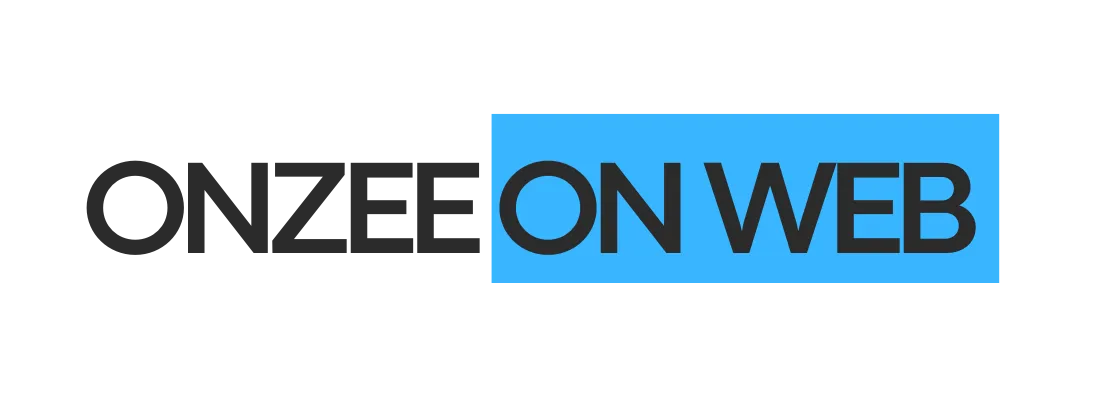Introduction
In today’s digital-first world, having a beautiful website or app isn’t enough. What makes the difference between a user bouncing away and staying on your site is the experience — how it feels, how it works and how it looks. That’s where the disciplines of UI (User Interface) and UX (User Experience) come in.
At OnzeeonWeb, we help brands build not just visually appealing digital assets, but ones that drive engagement, conversions and sustained growth. Let’s dive into UI vs UX, how they differ — and how together they elevate your digital product.
What is UX Design?
User Experience (UX) design is the process of creating a product that offers meaningful and relevant experiences to users. That includes aspects like:
- How easy is it for the user to find what they need?
- Is the journey intuitive and friction-free?
- Does the product satisfy the user’s goals and bring value?
In short: UX is about the experience. It’s how a user feels when interacting with your site or app.
Key elements of UX include:
- User research (understanding user needs, behaviours, pain-points)
- Information architecture (structuring content so users can navigate easily)
- Wireframes & prototyping (mapping user flows, layouts before final design)
- Usability testing (validating that users can complete tasks efficiently)
- Accessibility and performance (ensuring inclusive, fast and responsive experience)
Why UX matters
If your UX is poor, users will struggle: they’ll leave, bounce, not convert. A strong UX helps you:
- Increase user satisfaction and loyalty
- Reduce friction and support tickets
- Grow engagement and conversions
- Build a brand that people trust
Why UI matters
Think of the UI as the handshake your user gets from your product. If it’s crisp, approachable and polished, it builds trust. If it’s cluttered, inconsistent or confusing, users hesitate. A
Aspect | UX Design | UI Design |
| Focus | Overall experience & how things work | Visual & interactive interface look |
| Key questions | Is it usable? Does it solve the user’s problem? | Is it attractive? Is it aligned with brand? |
| Methods | Research, flows, prototypes, testing | Visual mockups, style guides, animations |
| Outcome | Seamless, intuitive product | Polished, engaging interface |
- Make first impressions matter (users form opinions quickly)
- Reinforce brand identity and professionalism
- Guide users visually so they don’t get lost
- Enhance perceived value and credibility
UI vs UX: What’s the Difference?
Often these two are used interchangeably, but they are distinct — and both are essential. Here’s a side-by-side comparison:
In practice, a website can have a stunning UI but suffer in UX (users can’t find what they need). Conversely, a great UX with a weak UI may function well but feel cheap or untrustworthy. The real winners are products that balance both.
How to Ensure Strong UI & UX — A Checklist for Brands
Here are actionable guidelines we follow at OnzeeonWeb to ensure your digital presence is both beautiful and functional:
UX Checklist
- Define the user goals: What tasks are users trying to accomplish?
- Map user journeys: Visualise the steps users take from landing to outcome.
- Conduct usability testing: Observe real users interacting with your design and iterate.
- Prioritise performance & responsiveness: Mobile-first, fast loading, accessible.
- Measure key metrics: Bounce rate, session length, conversion rate — track and refine.
UI Checklist
- Establish brand-consistent style guide: colours, typography, iconography.
- Keep layout clean and uncluttered: White space is a designer’s friend.
- Use visual hierarchy: Make primary actions distinct, secondary less so.
- Micro-interactions & feedback: Buttons animate, loading states show, transitions feel smooth.
- Design for multiple devices: Ensure UI adapts seamlessly from mobile to desktop.
Trends in UI/UX Design to Watch in 2025
- Dark mode & theme toggles: More users expect choice in UI theme.
- Micro-animations: Subtle movement adds interactivity and delight.
- Voice UI and conversational design: Chatbots, voice search becoming more integrated.
- Inclusive design & accessibility: Designing for all users (WCAG compliance) is non-negotiable.
- Minimalism + bold typography: Cleaner interfaces with impactful typography and less clutter.
- Augmented Reality (AR) and immersive interfaces: Especially for mobile eCommerce or experiential brands.
How OnzeeonWeb Helps You Get UI & UX Right
At OnzeeonWeb, our full-stack digital service emphasises both UI and UX in every website or app project. Here’s how:
- We begin with user research and strategy — not just visuals.
- We turn findings into UX-driven wireframes and prototypes.
- Our UI designers then craft a visually coherent interface aligned with your brand identity.
- We build responsively with performance, accessibility and conversion optimisation in mind.
- We track metrics post-launch and iterate to continuously improve.
Whether you’re launching a new website, revamping your UI/UX, or looking to optimise conversion across devices — we’re here to help.
Conclusion
UI and UX are two sides of the same coin. One defines how something works, the other defines how it looks and feels. Ignore either, and you risk falling short. Nail both, and you build digital experiences that users love — and that drive results for your business.
If you’re ready to elevate your digital interface and experience, let’s talk. At OnzeeonWeb, we believe great design is not just an aesthetic — it’s a strategic growth driver.
